Anti-ship ballistic missiles long-range
Every year, farther and farther into the past story The USSR, in this connection, many past achievements and greatness of our country are fading and forgotten. It is sad ... Now it seems to us that we all knew about our achievements, nevertheless, there were still white spots. As you know, the lack of information, ignorance of its history, has the most disastrous consequences ...
At the moment we are witnessing the processes generated, on the one hand, by the easy possibility of disseminating any information (Internet, media, books, etc.), and the lack of state censorship, on the other. The result is that a whole generation of designers and engineers is forgotten, their personality is often blackened, their thoughts are distorted, not to mention the unreliable perception of the entire period of Soviet history.
Moreover, foreign achievements are put at the forefront and are given almost the ultimate truth.
In this regard, the restoration and collection of information relating to the history of man-made systems created in the USSR, is an important task, allowing both to understand their past history, identify priorities and mistakes, and draw lessons for the future.
These materials are devoted to the history of creation and some technical details concerning the unique development, which still has no analogues in the world - the anti-ship missile 4K18. An attempt was made to compile information from open sources, to draw up a technical description, to recall the creators of unique technology, and also to answer the question: is the creation of this type of missiles relevant now? And whether they are needed as an asymmetric response in the confrontation of large ship groupings and single sea targets.
The creation of ballistic sea-based missiles in the USSR was carried out by the special engineering bureau of engineering SKB-385 in Miass, Chelyabinsk Region, headed by Viktor Petrovich Makeev. The production of missiles was established in the city of Zlatoust on the basis of the Machine-Building Plant. The Hermes Research Institute was located in Zlatoust, which also carried out work related to the development of individual rocket components. Fuel for missiles was produced at a chemical plant located at a safe distance from Chrysostom.

Makeev Viktor Petrovich (25.10.1924-25.10.1985).
Chief Designer of the world's only anti-ship ballistic
missiles R-27K, operated with 1975, on the same submarine.
At the beginning of the 60's In connection with the progress in engine building, the creation of new structural materials and their processing, new layouts of missiles, reducing the weights and volumes of control equipment, increasing power per unit mass of nuclear charges, it became possible to create missiles with a range of 2500 km. The missile complex with a similar missile provided rich possibilities: the possibility of striking a target with a single powerful warhead or several dispersing types, which made it possible to increase the area hit and create certain difficulties for prospective anti-missile defenses (PRO), carrying the second stage. In the latter case, it became possible to carry out maneuvering on an over-atmospheric portion of the trajectory with guidance to a naval radio-contrast target, which could be a carrier-based strike force (AUG).
From the very beginning of the Cold War, it was clear that carrier-based attack groups with high mobility, carrying a significant number of atomic-powered aircraft weaponsPossessing powerful anti-aircraft and anti-submarine defenses present significant danger. If the bases of the bombers, and in the future, and the missiles could be destroyed with a preemptive strike, then it would not have been possible to destroy the AUG. New rocket allowed to do this.
It is necessary to emphasize two facts.
First.
The United States made great efforts to deploy new AUGs and modernize old ones. Until the end of 50's Four aircraft carriers were built under the Forrestal project; in 1956, a Kitty Hawk-type attack aircraft was laid, which was an improved Forrestal. In the 1957 and 1961 years were built with the same type of aircraft carrier "Constellation" and "America". The aircraft carriers created during the Second World War - Oriskani, Essex, Midway and Ticonderoga were modernized. Finally, in 1958, a breakthrough step was taken - the creation of the world's first atomic strike carrier, Enterprise, began.
In 1960, long-range radar detection and targeting (DRLO and U) E-1 Tracker aircraft were commissioned, significantly increasing the air defense capabilities of the AUG.
At the beginning of 1960, the US-based F-4 “Phantom” deck fighter-bomber entered the United States, which was capable of supersonic flight and carrying atomic weapons.
The second fact.
The highest military-political command of the USSR has always paid considerable attention to questions of anti-ship defense. In connection with the progress in the creation of sea-based cruise missiles (which is largely the merit of OKB No. 51, headed by academician Vladimir Chelomey), the task of defeating the enemy’s ACG and the system was solved aviation and space reconnaissance and target designation allowed them to be detected. However, the probability of defeat over time became less and less: atomic multipurpose boats were created that could destroy submarine loci-carriers of cruise missiles, hydrophone stations were created that could track them, anti-submarine defense by Neptune and R-3C Orion aircraft was strengthened. Finally, layered AUG air defense (fighter aircraft, air defense missile systems, automatic artillery) made it possible to destroy launched cruise missiles. In this regard, it was decided to create a 4K18 ballistic missile capable of hitting AUG based on the 4K10 missile being developed.
Brief chronology of the creation of the complex D-5K SSBN Ave. 605
1968 year - developed technical design and necessary design documentation;
1968 year - listed in the 18 th DPL 12 th EPL SF based on the Sayda Yagelnaya Bay (Murmansk region);
1968 year, 5 November - 1970 year 9 December Has passed the modernization of the project 605 on the SMP (Severodvinsk). There is evidence that the submarine underwent repairs in the period from 30.07.1968 to 11.09.1968;
1970 year - corrected technical design and design documentation;
1970 year - mooring and factory tests;
1970 year, 9 – 18 December - access to the State tests;
1971 year - periodic work on the installation and testing gradually arriving technology;
1972 year, December - the continuation of the State tests of the missile complex, not completed;
1973 year, January-August - completion of the missile complex;
1973 year, 11 September - the beginning of the testing of missiles R-27K;
1973 - 1975 year - tests with long interruptions to finalize the missile system;
1975 year, 15 August - the signing of the acceptance certificate and admission to the Navy of the USSR;
1980 year, 3 July - excluded from the Navy in connection with the delivery of OFI for dismantling and implementation;
1981 year, 31 December - disbanded.
Brief chronology of the creation and testing of the rocket 4K18
1962 year, April - Resolution of the Central Committee of the Communist Party of the Soviet Union and the Council of Ministers on the creation of the D-5 rocket complex with the 4K10 rocket;
1962 year - advance design;
1963 year - pre-sketch design, developed two versions of the guidance system: with two-stage, ballistic plus aerodynamic and with purely ballistic aiming at the target;
1967 year - completion of the test 4K10;
1968 year, March - adoption of the D-5 complex;
the end of 60-s - complex tests were carried out on a second-stage LRE of the R-27K SLBM (the second tested drowned man);
1970 year, December - the beginning of the test 4K18;
1972 year, December - the joint testing of the D-5 complex with rocket launches 4K18 and the submarine 605 Ave began in Severodvinsk;
1973 year, November - the completion of tests with a double-launch volley;
1973 year, December - completion of the joint flight test;
1975 year, September - the government decree completed work on the D-5 complex with the 4K18 rocket.
Technical parameters of 4K18 SLBMs
Starting mass (t) - 13,25
Maximum firing range (km) - 900
The head part - monoblock with aiming at the mobile purposes
Missile length (m) - 9
Rocket Diameter (m) - 1,5
Number of steps - two
Fuel (at both stages) - asymmetric dimethyl hydrazine + nitric tetroxide
Systems and assemblies of 4K10 and 4K18 missiles were almost completely unified in terms of the first stage engine, rocket launch system (launch pad, adapter, launch method, missile-submarine docking, missile silo and its configuration), shell and bottom manufacturing technology, factory technology refueling and ampulization of tanks, units of ground equipment, means of loading, the scheme of passage from the manufacturer to the submarine, to the warehouses and arsenals of the Navy, according to the technologies of operation on fleets (including a submarine), etc.
The P-27 rocket (4K-10) is a single-stage rocket with a liquid-fuel engine. It is the ancestor of marine liquid rocket production. The rocket implemented a set of circuit-layout and design-technological solutions, which became the basis for all subsequent types of liquid rockets:
• all-welded rocket body structures;
• the introduction of a "recessed" scheme of the propulsion system - the location of the engine in the fuel tank;
• use of rubber-metal shock absorbers and placement of elements of the launch system on the rocket;
• factory refueling of rockets with long-lasting fuel components followed by ampulization of tanks;
• automated management of prelaunch preparation and salvo firing.
These decisions allowed to drastically reduce the size of the rocket, dramatically increase its readiness for combat use (pre-launch preparation time was 10 mines, the interval between rocket launches - 8 с), simplify and cheapen the operation of the complex in everyday activities.
The rocket body, made of Amg6 alloy, was facilitated by applying the method of deep chemical milling in the form of a “wafer” web. Between the fuel tank and the oxidizer tank placed two-layer separating the bottom. This solution allowed to abandon the inter-tank compartment and thereby reduce the size of the rocket. The engine was a two-block. The central engine was 23850 kg, the control motors 3000 kg, which in total amounted to 26850 kg thrust at sea level and 29600 kg in vacuum and allowed the rocket to develop acceleration at the start in 1,94 g. The specific impulse at sea level was 269 seconds, in a vacuum - 296 seconds.
At the second stage, the engine was also installed "drowned". Successful overcoming of the problems associated with the introduction of a new type of engine at both stages was provided by the efforts of many designers and engineers, headed by the Lenin Prize winner, the lead designer of the first "drowned man" (RSBM-25, P-27K and P-27U submarines) A. A. Bakhmutov, who is the co-author of the “drowned man” (together with A.M. Isaev and A.A. Tolstov).
An adapter was installed in the lower part of the rocket, intended to dock with the launcher and create an air “bell”, reducing the pressure peak when the engine was started in a shaft flooded with water.
For the first time, an inertial control system was installed on the P-27 BR, the sensitive elements of which were placed on a gyro-stabilized platform.
Launcher fundamentally new scheme. It included a launch pad and rubber-metal shock absorbers (PMA) placed on the rocket. The rocket was without stabilizers, which, in combination with the PMA, reduced the diameter of the mine. The shipboard system for daily and pre-launch maintenance of the rocket provided automated remote control and monitoring of the systems from a single console, and automated centralized management of pre-launch preparation, launch of rockets, as well as comprehensive regulatory checks of all missiles was carried out from the missile control panel (PURO).
The baseline data for the shooting was developed by the combat information and control system “Tucha” - the first domestic multi-purpose automated shipboard system providing the use of rocket and torpedo weapons. In addition, “Tucha” collected and processed information about the environment, as well as solving navigation problems.
Initially, a detachable head section with high aerodynamic quality was adopted, controlled by aerodynamic control surfaces and a passive radio engineering guidance system. Placement of the head part was planned on a single-stage carrier, unified with the 4K10 rocket.
As a result of the emergence of a number of irreducible problems, namely: the inability to create a radio-transparent fairing for pointing antennas of the required dimensions, an increase in rocket dimensions due to an increase in the mass and volume of instrumentation and control systems, which made it impossible to unify launch complexes, finally, with the capabilities of intelligence systems and target designation and with the algorithm for accounting for "obsolescence" of target designation data.
The target designation was provided by two radio engineering systems: the satellite system of the maritime space reconnaissance and target designation (MKRTS) "Legend" and the aviation "Success-U".
There were two types of satellites in the MKRTS Legend: US-P (GRAU index 17F17) and US-A (17F16-K). US-P, which is a radio intelligence reconnaissance satellite, ensured the delivery of target indications by receiving radio emissions emitted by a carrier-based strike force. US-A acted on the radar principle.
The Success-U system had Tu-95РЦ planes and Ka-25РЦ helicopters.
During the processing of data received from satellites, the transfer of target designation to the submarine, the alert of the ballistic missile and during its flight, the target could move away from its original position at 150 km. Aerodynamic guidance did not meet this requirement.
For this reason, two versions of the two-stage 4K18 rocket were developed in the pre-sketch project: with two-stage, ballistic plus aerodynamic (a) and purely ballistic aiming at target (b). In the first method, the guidance is performed in two stages: after a target is captured by a lateral antenna system with enhanced direction finding accuracy and a detection range (up to 800 km), the flight trajectory is corrected by restarting the second-stage engine. (A double ballistic correction is possible.) At the second stage, after the target is captured by the nasal antenna system, the head part is aimed at the target already in the atmosphere, ensuring an accuracy of hit sufficient to use a charge of a small power class. In this case, the low requirements for the viewing angle and aerodynamic shape of the fairing are imposed on the nose antennas, since the target guidance zone has already been reduced by almost an order of magnitude.
The use of two antenna systems eliminates continuous tracking of the target and simplifies the nasal antenna, but complicates the gyroplanes and requires the mandatory use of an onboard digital computer.
As a result, the length of the controlled head part was less than 40% of the rocket length, and the maximum firing range was reduced by 30% of the target.
That is why in the pre-sketch project of the 4K18 rocket, the option was considered only with a double ballistic correction; it has seriously simplified the onboard control system, the design of the rocket and the head part (i.e., the combat unit), the length of the fuel tanks of the rocket is increased, and the maximum firing range has been brought to the desired value. Accuracy of aiming at a target without atmospheric correction deteriorated significantly, therefore, an uncontrollable combat unit with an increased power charge was used to confidently hit the target.
In the preliminary design, the version of the 4K18 rocket was adopted with a passive reception of a radar signal emitted by the enemy’s shipboard connection and with a ballistic trajectory correction by double switching on the second stage engines in the extra-atmospheric portion of the flight.
Rocket R-27K has passed a full cycle of design and experimental testing; working and operational documentation was developed. From a ground stand at the State Central Test Site in Kapustin Yar, 20 launches were conducted, of which 16 was conducted with positive results.
For the R-27K rocket on 605 Ave., the diesel-electric submarine Ave 629 was reequipped. The launch of the missile from the submarine was preceded by the throwing tests of the 4K18 rocket models at the submersible PSD-5 stand, which was specially created according to the design documentation of the Volga CVB.
The first launch of the 4K18 rocket from a submarine in Severodvinsk was carried out in December 1972, in November 1973, flight tests were completed with a two-missile salvo. In total, 11 missiles were launched from the boat, including 10 launches - successful. At the last launch, a direct hit (!!!) of the combat unit in the target ship was ensured.
The peculiarity of these tests was that a barge with a working radar station was installed on the battlefield, which simulated a large target and emitted a missile. The technical leader of the tests was Deputy Chief Designer Sh. I. Boksar.
By the Government Decree, work on the D-5 complex with the 4K18 rocket was completed in September 1975. The submarine of 605 Ave. with 4К18 missiles was in trial operation until 1982, according to other data up to 1981.
In this way, 31 launched missile conditional target hit 26 missiles - an unprecedented success for the rocket. 4K18 was a fundamentally new rocket, no one had done anything like this before, and these results could not be better characterize the high technological level of Soviet rocket production. Also largely due to the success of the fact that 4K18 entered the tests at 4 a year later than 4K10.
But why didn't 4K18 go into service?
The reasons are called different. First, the lack of infrastructure intelligence targets. Do not forget that at the time when 4K18 was tested, the MKRTS Legend system was also not yet put into service, the target designation system based on aircraft carriers could not provide global observation.
Technical reasons are mentioned, in particular, the “designer’s error in the electrical circuit, halving the reliability of targeting the 4K18 SLBM to mobile radio targets (aircraft carriers), which was eliminated when analyzing the causes of accidents of two test launches, is mentioned.”
The inhibition of the tests occurred, including in connection with the short supply of the missile control systems and the target designation complex.
With the signing of the SALT-1972 Treaty in 2, the planned SSNBX 667 planes for construction with the P-27K missiles, which had no functionally observable differences from the 667A ships - strategic P-27 missiles, were automatically counted for the PL-Y and PU missiles . Deploying several dozen P-27K respectively reduced the number of strategic SLBMs. Despite the seemingly more than sufficient number of such SLBMs allowed for deployment to the Soviet side - 950 units, any reduction in the strategic grouping in those years was considered unacceptable.
As a result, despite the formal adoption of the D-5K complex into operation by a resolution of 2 of September 1975, the number of deployed missiles did not exceed four units on the only experimental submarine Ave 605.
Finally, the latest version is the undercover struggle of bureau leaders who produced anti-ship complexes. Makeev attacked Tupolev and Chelomey’s patrimony and, possibly, lost.
It should be noted that at the end of 60's, work on the creation of anti-submarine complexes proceeded on a broad front: modified Tu-16 10-26 bombers with P-5 and P-5H were produced, and Tu-22X2 aircraft were under development. The Tupolev Design Bureau with the Sotka X-22 and T-4 missile with a fundamentally new hypersonic missile, developed in Design Bureau headed by Sukhoi. The development of anti-ship missiles for submarines "Granit" and 4K18.
Of all this mass of work, the most exotic were not carried out - T-4 and 4-18. Perhaps the supporters of the collusion theory of the higher ranks and the heads of the factories are right about the priority of producing certain products. Perhaps the reason was economic expediency and lower efficiency was sacrificed for mass production?
A similar situation occurred during the Second World War: the German command, which made a bet on the wunderwaffe, an amazing weapon, lost the war. Rocket and jet technologies gave an unheard of impetus in the post-war technological development, but did not help win the war. Rather, on the contrary, having exhausted the economy of the Reich, they brought its end closer.
The most likely is the following hypothesis. With the advent of the Tu-22М2 rocket carriers, missile launching from long range and departure from enemy fighters at supersonic speed became possible. Reducing the likelihood of intercepting missiles was provided by installing on the part of the missiles means jamming. As indicated, these measures proved to be so effective that none of the 15 missiles were intercepted during the exercises. In such conditions, the creation of a new missile with even a slightly smaller range (900 km versus 1000 of the Tu-22М2) was too wasteful.
(cited from the book \ "Design Bureau of Mechanical Engineering named after Academician V.P. Makeyev \")
In parallel with the experimental design development of the D-5 complex with the anti-ship ballistic missile R-27K, research and design work was carried out on other variants of anti-ship missiles using a combined active-passive sight-corrector and homing on the atmospheric part of the flight to hit the priority targets in the aircraft-carrying shock groups or convoys. In this case, in the case of positive results, it was possible to switch to nuclear weapons of small and ultra-low power classes or to use conventional ammunition.
In the middle of 60's. design studies of the D-5М missiles with an increased length and launch mass relative to the D-5 missiles were carried out. At the end of 60's rockets with increased energetics of the P-29 type of the D-9 complex were investigated
In June, 1971 issued a government decree on the creation of the D-13 rocket complex with the P-33 rocket equipped with combined (active-passive) means and homing equipment for the head units on the descending section.
According to the decree at the end of 1972. an advance design was introduced and a new resolution was issued specifying the development stages (missile tests from a submarine were originally asked for 1977). The decree terminated work on the deployment of the D-5 complex with the P-27K missile on the submarine of 667 Ave. Were installed: the mass and dimensions of the rocket R-33, similar to the rocket P-29; the deployment of missiles P-33 on submarines pr. 667B; the use of monoblock and separable warheads with special and ordinary equipment; firing range to 2,0 thousand. Km.
In December, 1971. The Chief Designers Board identified the priority work for the D-13 complex:
- to give the initial data on the rocket;
- to coordinate tactical and technical tasks for the missile and complex components;
- make the design of the rocket with the equipment adopted for development in the preliminary design (equipment on the launch vehicle about 700 kg, volume - two cubic meters; on the self-guided block of the divided head part - 150 kg, two hundred liters).
The state of work at the middle of 1972 was unsatisfactory: the firing range decreased by 40% due to an increase in the front compartment of the rocket to 50% of the length of the P-29 rocket and a decrease in the starting mass of the P-33 rocket by 29%.
In addition, problem issues associated with the operation of the combined sight in plasma formation conditions, antenna protection from thermal and mechanical effects during ballistic flight, with obtaining acceptable target designation using existing and prospective means of space and hydro-acoustic reconnaissance were identified.
As a result, a two-stage development of an advance project was proposed:
- in the II quarter. 1973, according to the systems of the rocket and the complex, with the determination of the possibility of achieving the required characteristics, the level of which was established at the Council of Chief Designers in December, 1971, and confirmed by a decision of the Collegium of the Ministry of General Engineering in June 1972;
- in the I quarter. 1974 g. - for the rocket and the complex as a whole; at the same time, the task was to coordinate in the design process development issues related to the enemy model, the enemy counter model, as well as target designation problems and reconnaissance equipment.
The advance design of the rocket and complex was developed in June 1974. The predicted reduction of the specified range of fire on 10-20%, if you stay in the dimensions of the P-29Р, or on 25-30%, if you solve the problems of plasma formation. A joint flight test from a submarine was scheduled for 1980. An advance design was considered at the Institute of Armaments of the Navy in 1975. There was no government resolution for further development. The development of the D-13 complex was not included in the five-year R & D plan for 1976-1980, approved by government decree. Such a decision was due not only to the problems of development, but also to the provisions of the Treaties and the treaty process on the limitation of strategic weapons (SALT), which classified anti-ship ballistic missiles to strategic weapons on external grounds.
Based on the most massive MBR UR-100 Chelomey V.M. also worked out a variant of the CRP.
Already at the beginning of the 1980-ies to defeat carrier-based and large amphibious units on the approaches to the shores of the European part of the USSR and the Warsaw Pact countries based on the 15ЖХ45 medium-range missile of the Pioneer mobile complex and targeting systems of the Navy Legend and MrsTs Uspeh MIT (Moscow Institute of Heat Engineering) was created coastal reconnaissance and shock system (RUS).
Work on the system was stopped in the middle of 1980-ies due to the high costs of creation and in connection with the negotiations on the elimination of medium-range missiles.
Another interesting job was done at the southern rocket center.
According to the Government Decree of October 1973, the Yuzhnoye Design Bureau (KBYu) was entrusted with the development of a self-guided Mayak-1 (15-678) combat unit with a gas-cylinder propulsion system for the P-36M ICBM. In 1975, a block sketch was developed. In July, the 1978 of the year began and in August, the 1980 of the year ended with the LKI of the self-guided 15F678 head part on the 15A14 rocket with two options of sight equipment (using radio-brightness maps of the terrain and maps of the terrain). The head of the 15F678 was not accepted for service.
Already at the beginning of the 21st century, another unconventional work was carried out with ballistic missiles, where it was important to use the maneuverability and accuracy of the delivery of ballistic missile equipment, and also related to solving problems at sea.
The NPO Mashinostroenie together with TsNIIMASH proposes to create, by the 2000-2003 years, the Prizyv rocket-space ambulance system to provide emergency assistance to sea vessels in distress in the world’s oceans by means of the 100-19 SS-1. As a payload on the rocket, it is proposed to install special aerospace rescue aircraft, ALS-2 and ALS-15. At the same time, the speed of delivery of the emergency kit can be from 1,5 minutes to 20 hours, landing accuracy + 30-420 m, cargo weight 2500 and XNUMX kg, depending on the type of ALS.
Also worth mentioning is the work on the P-17WTO Aero (8K14-1F).
According to the results of the research, the “Aerofon” GOS was created, which is able to recognize, capture and homing by the photo-image of the target.
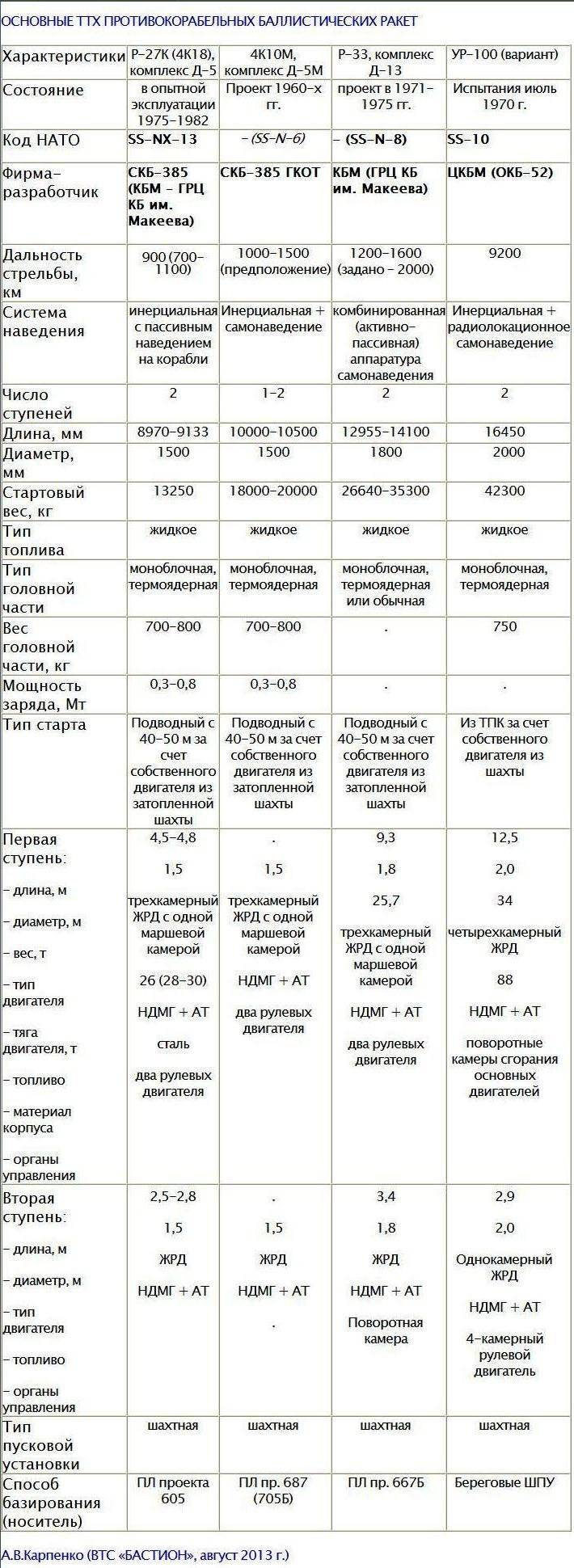
Perhaps, it is worth starting this part with a sensational message from news agencies:
“China is developing ballistic anti-ship missiles, reports Defense News.
According to a number of military analysts from the United States and Taiwan, in 2009-2012, China will begin deploying the anti-ship variant of the DF-21 ballistic missiles.
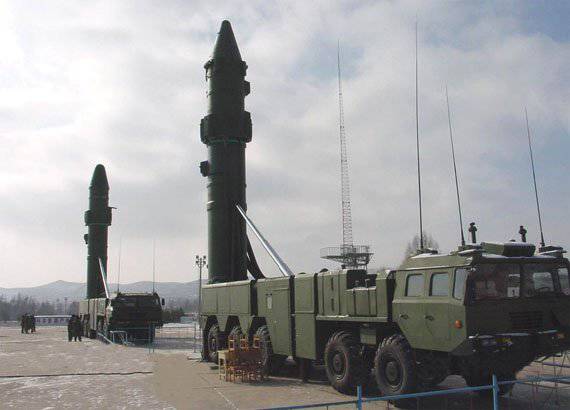
Allegedly, the head of the new rocket can hit moving targets. The use of such missiles will destroy aircraft carriers, despite the powerful air defense of the ship connections.
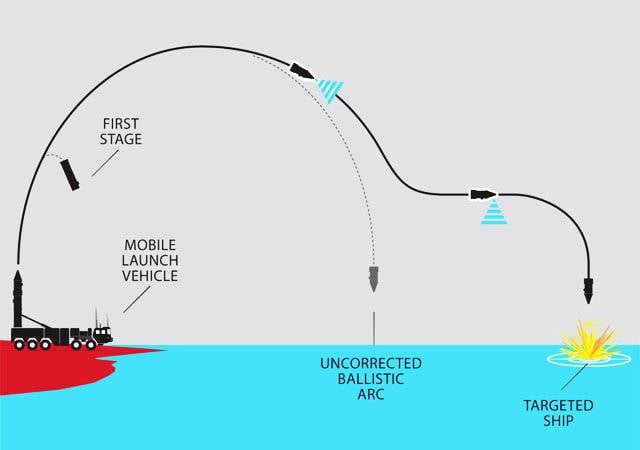
According to experts, modern shipboard air defense systems are not capable of hitting the head parts of ballistic missiles falling vertically at a target at a speed of several kilometers per second.
The first experiments with ballistic missiles as anti-ship were carried out in the USSR in the 70-ies, but then they were not crowned with success (the level of development and the degree of "failure" are visible from the data cited above. Consider them to be unsuccessful, it is possible only with a very, very big stretch., approx Rus2012). Modern technologies make it possible to equip a ballistic missile warhead with a radar or an infrared guidance system, which ensures the defeat of moving targets "
As you can see, at the end of the USSR 70x had the technology of "long arm" against aircraft carrier connections.
At the same time, it is not even important that not all the components of this system: airborne target designation and ballistic anti-ship missiles - BKRP were fully deployed. The main thing is that the principle has been developed and the technology has been developed.
It remains for us to repeat the existing groundwork at the modern level of science, technology, materials and components, to bring to perfection, and in sufficient quantities to deploy the necessary missile systems and reconnaissance and target designation systems based on the space component and the over-the-horizon radar. However, many of them are not required. Only with the prospect of less than 20 rocket kits (according to the number of AUG in the world), taking into account the guarantee and duplication of attacks - 40 complexes. This is just one missile division of the Soviet era. It is desirable, of course, to deploy in three forms: mobile - on a submarine, PGRK (based on Pioneer-Topol) and a mine version based on a new heavy rocket or the same stationary landlords in coastal areas.
And then, as they would say, opponents of AUG - it would be an aspen (tungsten, depleted uranium or nuclear) stake in the heart of aircraft carriers.
In any case, it would be an asymmetric response and a real threat, forever attributing AUGI to the shore.
Based on: site makeyev.msk.ru, A.V. Karpenko, BTC "Bastion", August 2013
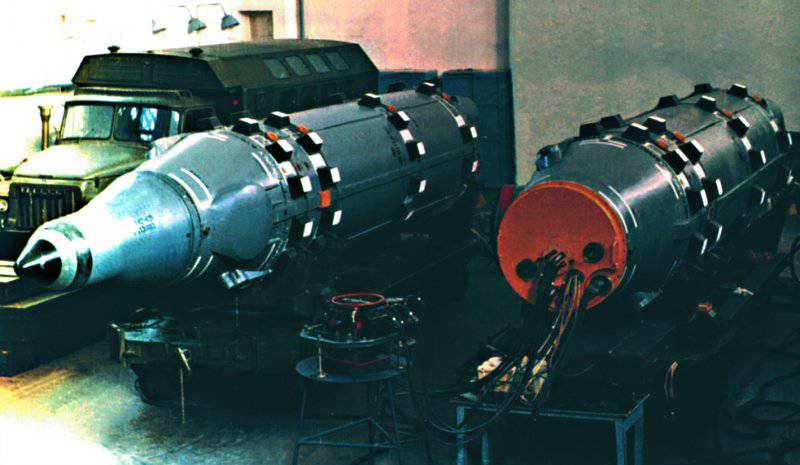

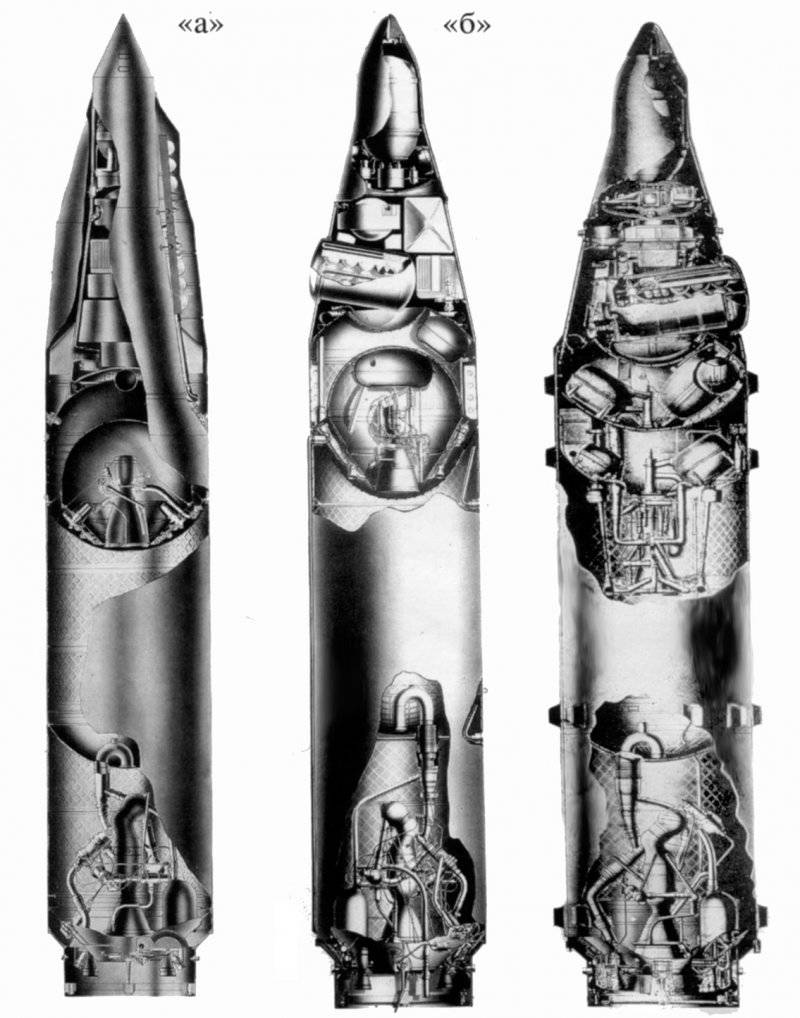
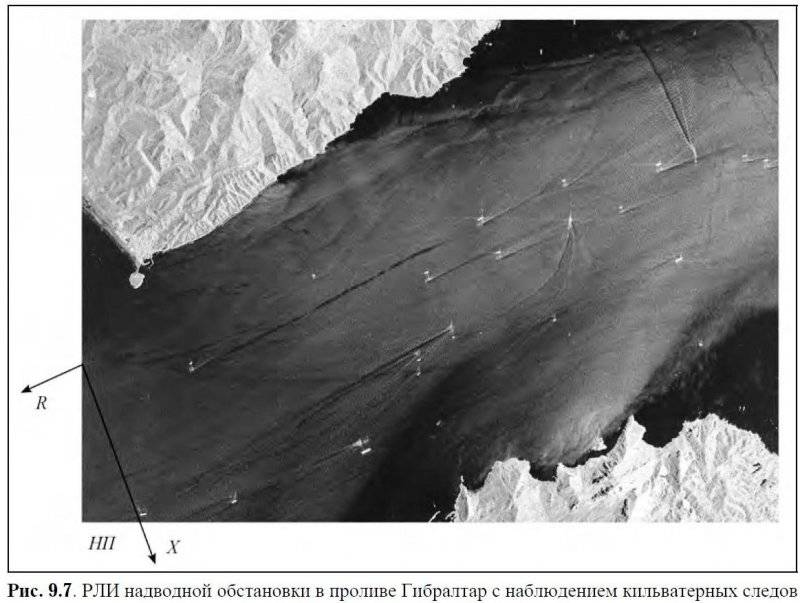




Information